Mary Ellen Mark | Encounters
Photo book of the month
In this column I present every month a photo book that is very close to my heart. It is not – or not necessarily – a new release. It is simply a book that somehow came into my hands and that I would like to suggest to others.
With the new year 2024, I will only be writing this column in English from now on. German-speaking readers may forgive me… if necessary, there are very useful online translators these days.
January 2024 – Mary Ellen Mark | Encounters
I am starting the year 2024 with a female photographer, Mary Ellen Mark, for two reasons – one very fundamental and one pragmatic.
It’s not as if I haven’t presented any female photographers here yet. But I don’t think I’ve featured enough. This applies, for example, to the New Colour Photography series. To my shame, I didn’t feature any women there. I urgently want to change that this year. OK, Mary Ellen Mark is not exactly the right example, but there is another reason for the rush.
The reason is – see below – that the exhibition of this book at C/O Berlin only runs until the 14th of January. So be quick if you still want to see it 😉
About Mary Ellen Mark
Mary Ellen Mark was born in Philadelphia/USA in 1940. She is undoubtedly one of the most important and influential photographers of our time. I say “of our time” even though she sadly passed away in 2015. But until then, she had shaped photography – especially socially critical reportage and documentary photography – like few others for over five decades.
She began studying art and art history in 1958, but also completed her bachelor’s degree in photojournalism in 1964. From 1968 she worked as a freelance photographer, between 1977 and 1981 also for the Magnum photo agency.
She left Magnum to be more independent and be able to dedicate more time to her projects. She either realised these for herself – often over many years – or worked on them on behalf of magazines. The results of her photographic work over 5 decades can be found in countless exhibitions and 20 books. Mark has also received more awards for her work throughout her life than I could possibly list here.
Her fame and the considerable size of her photographic legacy perhaps somewhat conceal the fact that, from the late 1970s onwards, it was no longer so easy to earn money with her type of photography. However, Mary Ellen Mark knew how to deal with this. Over the years, she developed a smart patchwork strategy of freelance and commercial projects. It should be mentioned that her commissioned work was also usually very interesting, such as shooting on film sets, including that of “One Flew Over the Cuckoo’s Nest”. As you can see, this in turn sometimes led to further projects of its own…
Encounters
In some ways, Encounters could be seen as something like a first retrospective on Mary Ellen Mark – at least as an exhibition and a book at the same time. To a certain extent, of course, the work “The Book of Everything“, which is unfortunately already out of print and consists of three volumes, could also be understood as such. But that’s another story…
Mary Ellen Mark has gained a certain reputation as a photographer far beyond the photography scene. It is safe to say that she is one of the greats of her craft. In a way, she was something of a famous person herself. And of course this popularity has also helped her to photograph other famous people. This resulted in such well-known pictures as the ones below of Jeff Bridges, Marlon Brando, Patrick Swayze and Dennis Hopper.
But she was far, far from being a star photographer like Annie Leibovitz. Her primary interest was always in “normal” people on the street. In this respect, these “star portraits” only make up an absolutely tiny part of her overall work – as they do in the book and in the exhibition.
A humanist to the core
Mary Ellen Mark’s photography – and certainly her entire character – was initially and probably first and foremost characterised by a deep humanism. She was genuinely and deeply interested in people and their lives. Personally, I can’t think of another photographer off the top of my head – apart from perhaps Dorothea Lange and W. Eugene Smith – who would fit this description so extremely well and to a similar extent. And even the comparisons mentioned don’t quite fit the bill.
This drive drew her out into the world early on, first to Turkey and then repeatedly to India. However, the majority of her work was created in the USA, both in the cities and in the countryside.
Unlike many others, however, she never focussed on the image, but on the human being. She always spent time with the people she photographed – often a lot of time. And, as already mentioned, these people were rarely the most privileged under the sun.
The obsessions we have are pretty much the same our whole lives. Mine are people, the human condition, life.
Mary Ellen Mark
Going where it hurts
If Mary Ellen mark is known for anything, it’s for being an advocate for people on the fringes of society. Some of Mary Ellen Mark’s most famous – and for me also most emotional and powerful – series of pictures were taken in situations and under circumstances that were anything but easy for the people portrayed.
These include, above all, the images from long-term projects such as Ward 81 (a psychiatric ward for women at the Oregon State Hospital in Salem), the accompaniment of the Damm Family or that of Erin (Tiny) Charles. Mark accompanied Tiny – and her ten children – for a total of 30 years!
The pictures here are so honest, so empathetic and sometimes so heart-breaking that – at least for me – words actually fail. You really have to look at them to understand what I mean.
I just think it’s important to be direct and honest with people about why you’re photographing them and what you’re doing. After all, you are taking some of their soul.
Mary Elen Mark
There are also pictures, such as the works about American Nazis and members of the so-called White Supremacy, that leave one rather stunned. This also applies to Mary Ellen Mark, as she herself expressed on several occasions.
With all these photos – which are deliberately unpretentious, but technically incredibly good – I keep asking myself: how was Mark able to get so close to these people? Since she was demonstrably not invisible, she must have had the gift of incredible empathy. How I would have loved to have accompanied her at work to experience this live.
Seeing those that others only look at
Mary Ellen Mark’s interest in people from the margins of society has always included special groups. In India in particular, her attention was focussed for years on circuses – or to be more precise, on the people and life behind the scenes of these groups.
Mary Ellen Mark was never interested in the spectacular, the bizarre or the voyeuristic. Her pictures are usually very sensitive, personal and extremely respectful portraits of the circus people, often including the children there.
The little girl in the photo below may serve as an example of this. Mary Ellen Mark portrays her here, of course, in what she does in the circus – she is one of the so-called contortionists there. But above all she also shows a girl with very sharp and self-confident eyes in this portrait.
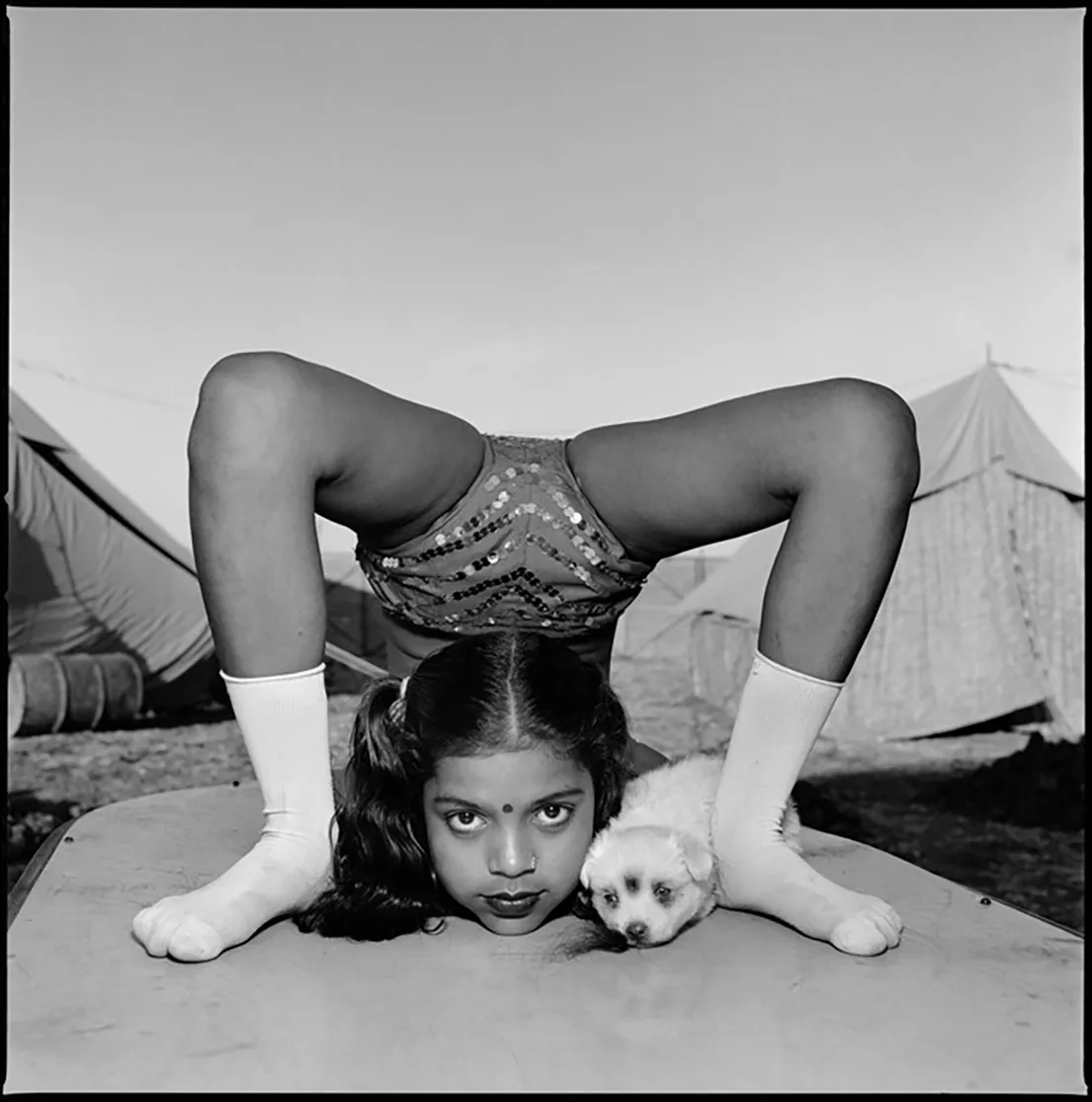
Another example that has become famous is the work on sex workers in Mumbai, which was produced in collaboration with Mother Theresa and resulted in a book of her own – Falkland Road. In general, women often play a major role in Mark’s work, as they do in Ward 81, among others. This is not surprising, as Mary Ellen Mark was of course socialised in the strong women’s rights movement of the 1970s.
Usually my ideas for work have revolved around my interest in people, especially people that live on the edges of society.
Mary Ellen MArk
The Photo Book
The retrospective Encounters – book and exhibition alike – essentially gives us a good insight into the most important iconic works by Mary Ellen Mark – some of which, such as Falkland Road, The Damm Family, Indian Circus or Streetwise & Tiny, I have already mentioned.
But it shows us much more, at least in excerpts. Of course, more is not to be expected given the incredible scope of the photographer’s portfolio. The individual chapters show examples from a total of 19 series of Mark’s work. In addition, excerpts from newspapers and magazines give us an impression of the great importance Mary Ellen Mark had for social documentary photography over the decades.
I don’t have to say much about the book itself, it is made in the usual excellent Steidl quality, on good quality paper and with a beautiful linen cover.
The broad range of content in the book and exhibition is particularly important because Mark’s work also took place beyond social documentation. It’s a fact that isn’t always so well known and I haven’t emphasised it much here either. Her colour works on Miami should just be mentioned here as an example.

The Exhibition
As already mentioned, the exhibition at C/O Berlin unfortunately only runs until 14 January 2024, so if you still have the opportunity, go and see it. As always at C/O Berlin, the exhibition is excellently done and of course gives a different view of the pictures than a book can.
The pictures below show some impressions from the exhibition.
Final words
Anyone who has managed to read my – unfortunately again – rather long review will not be surprised that I will be brief here. My admiration for Mary Ellen Mark is unquestionably very great. I would say I really look up to her. For me, she really is one of the most important “voices” in socially critical photojournalism – perhaps even the most important.
On the one hand, her pictures are characterised by a tremendous documentary clarity – but also by an incredible empathy. Where, fortunately, there is less empathy – as in the project on White Supremacy, for example – the closeness to the people portrayed is nevertheless astonishing.
I congratulate all those who had the presence of mind to secure the three photo volumes of “The Book of Everything” in 2020 – unfortunately, it wasn’t me. For everyone else, I would at least recommend this retrospective first. Those wishing to delve a little deeper into the work of Mary Ellen Mark should perhaps consider the new edition of Ward 81 Voices, recently published by Steidl. Such a great work!
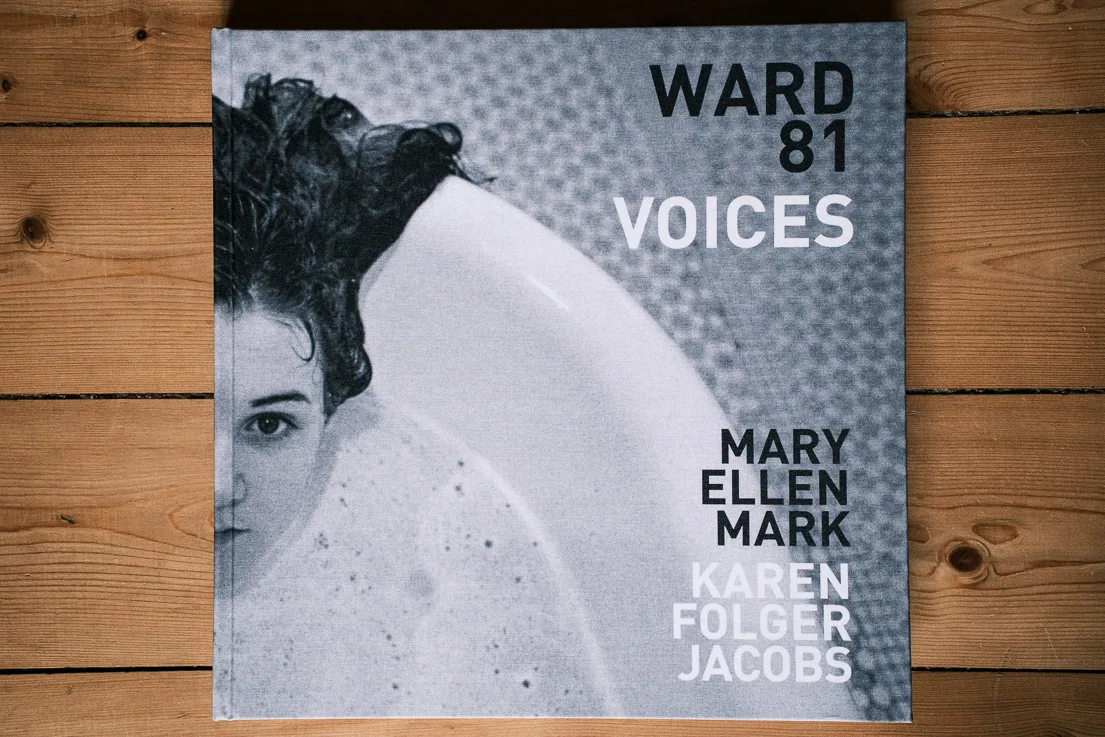
With this in mind, I wish you all a happy, healthy and exciting New Year 2024!





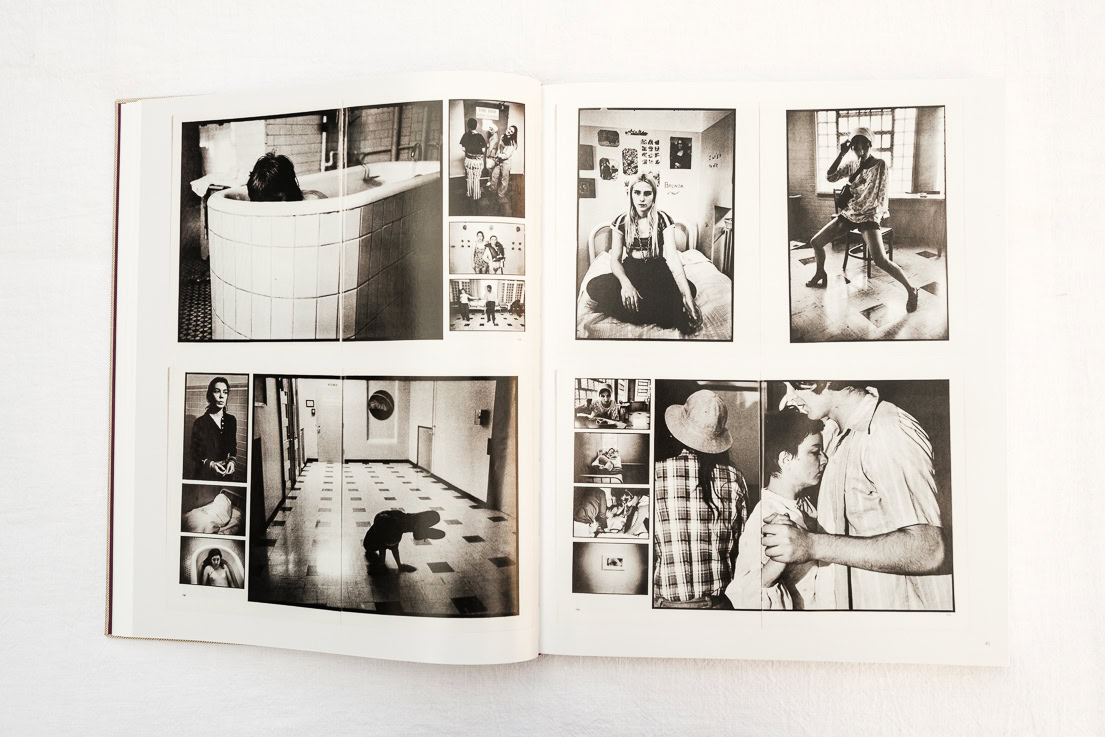
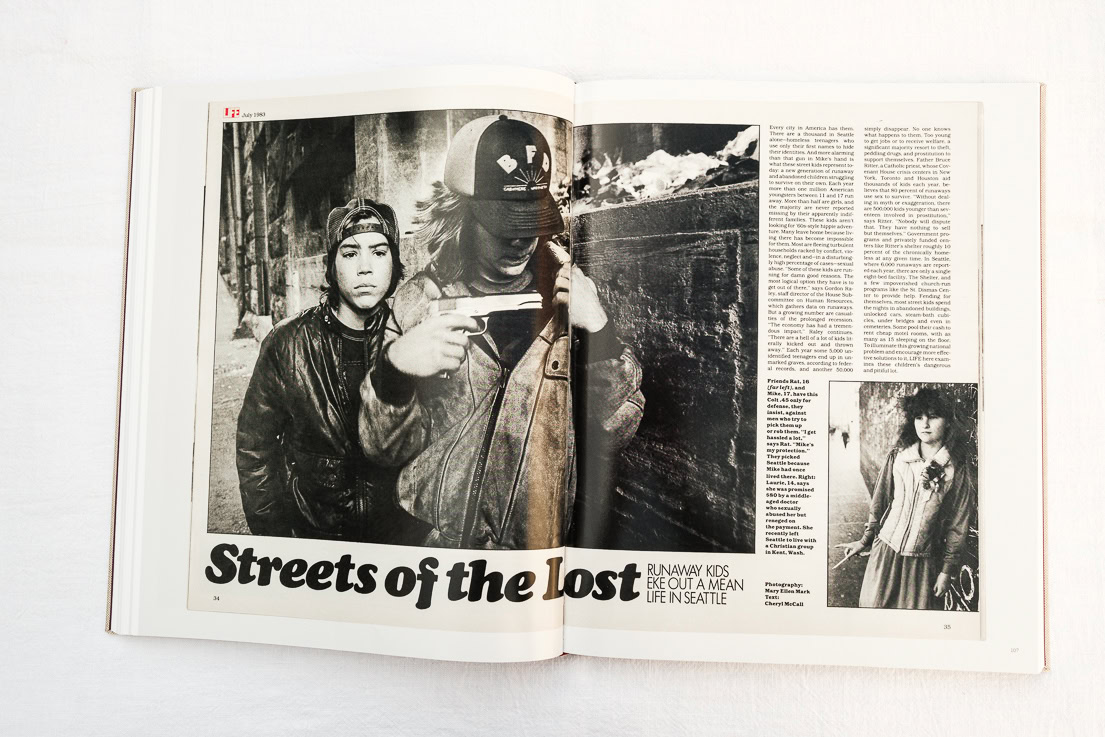
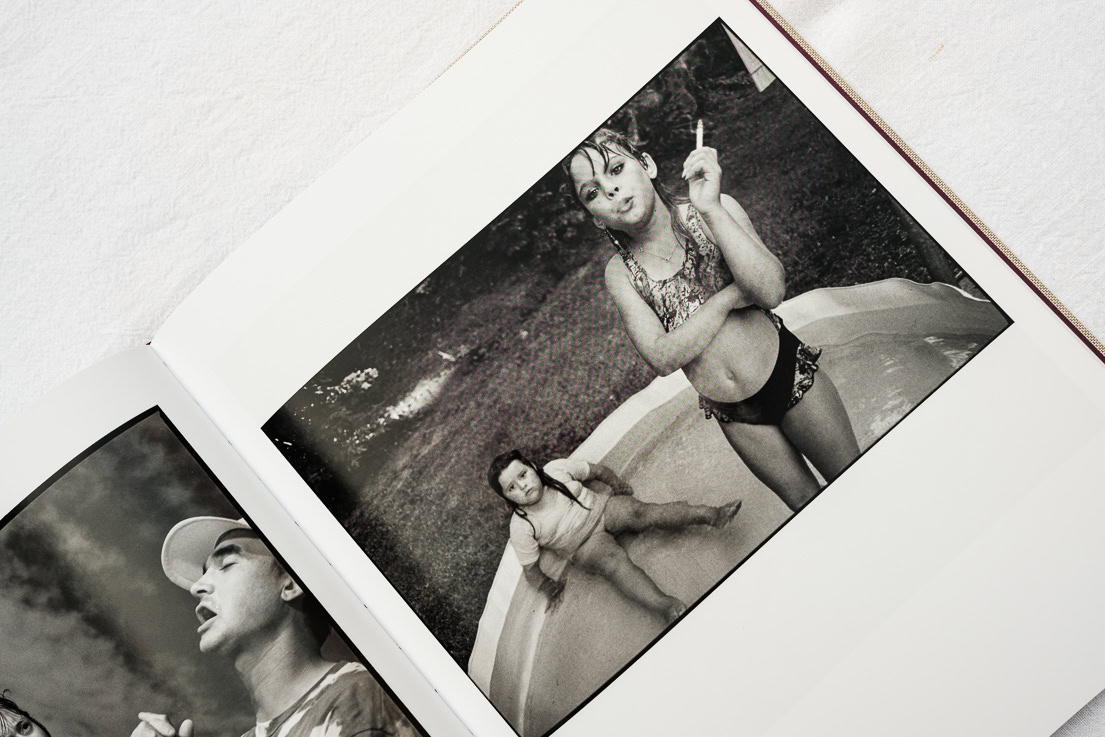
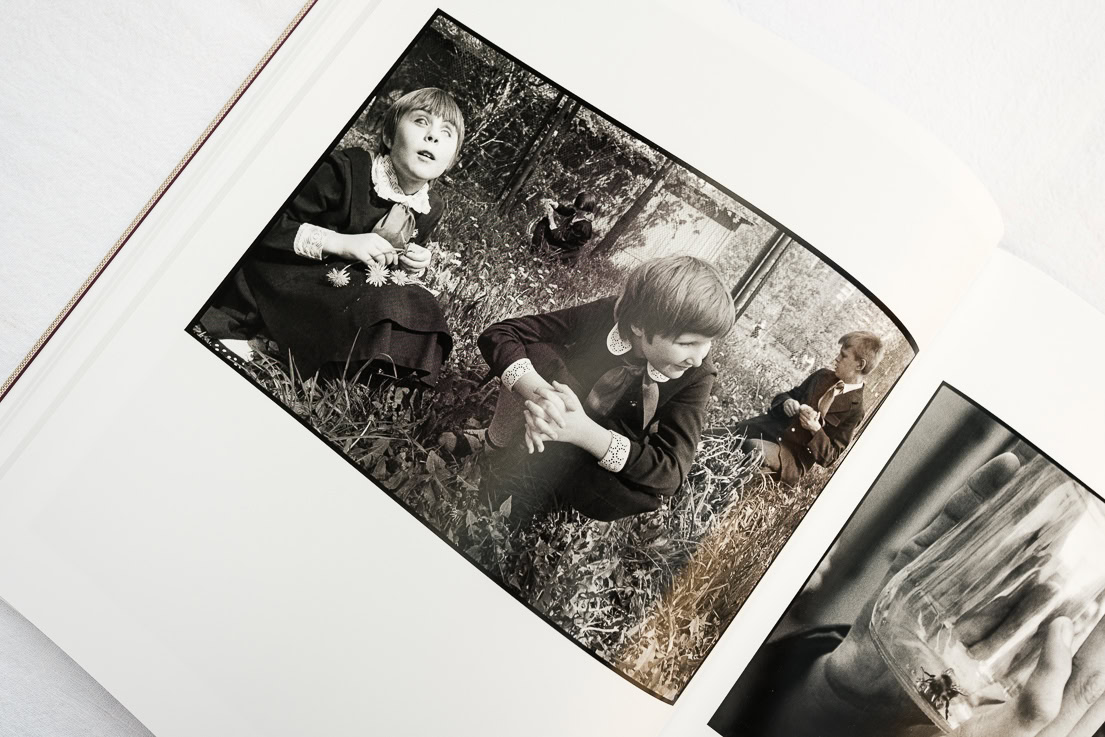
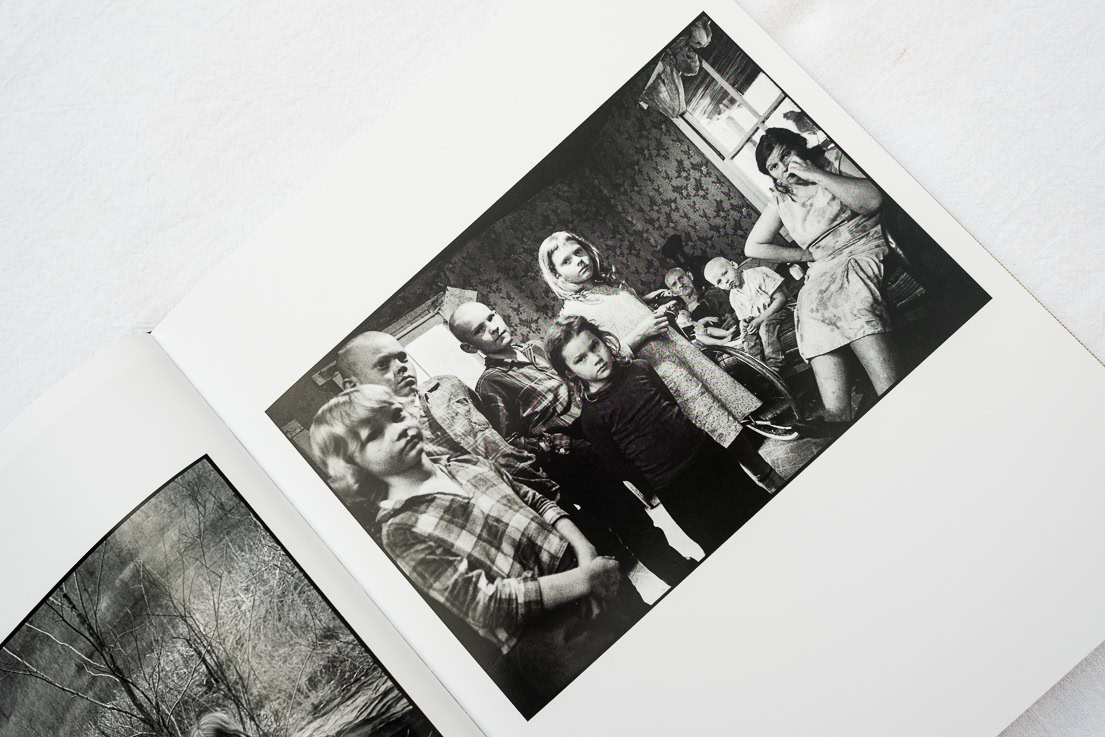
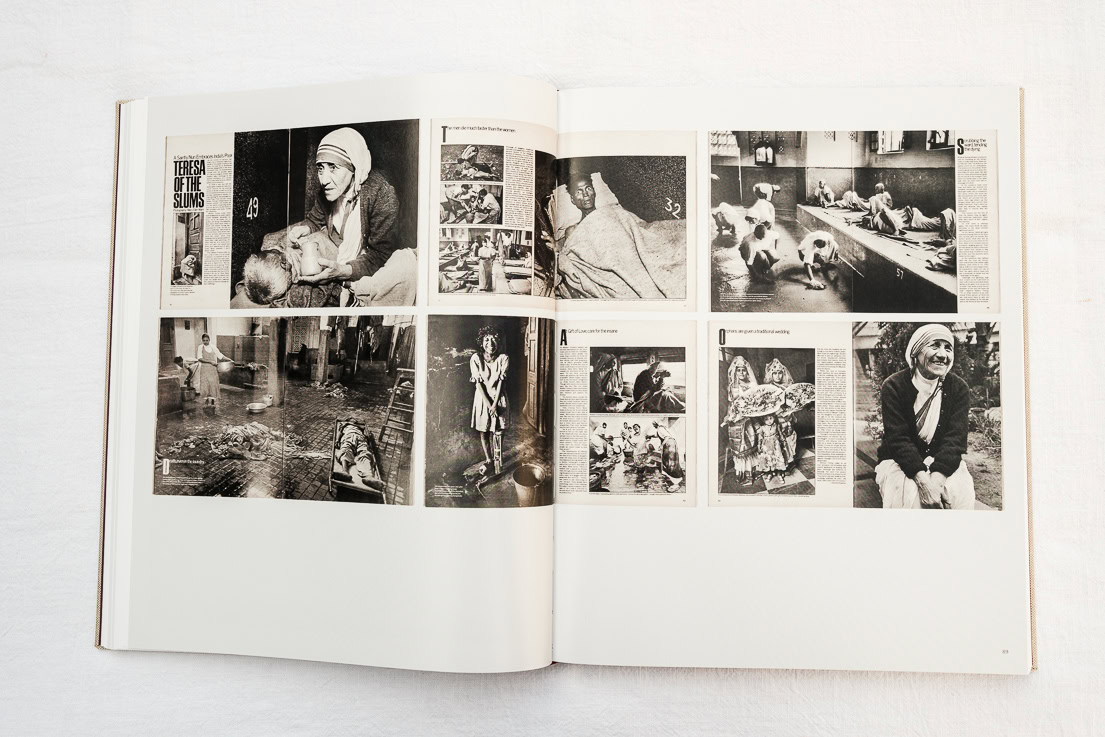
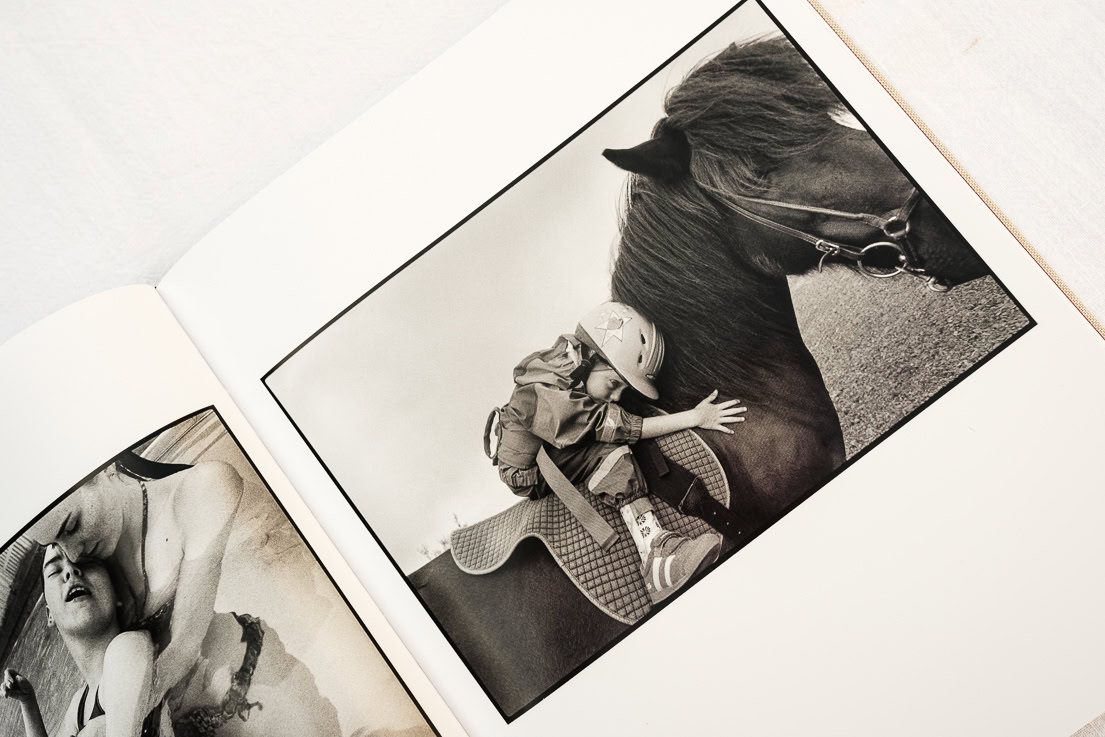
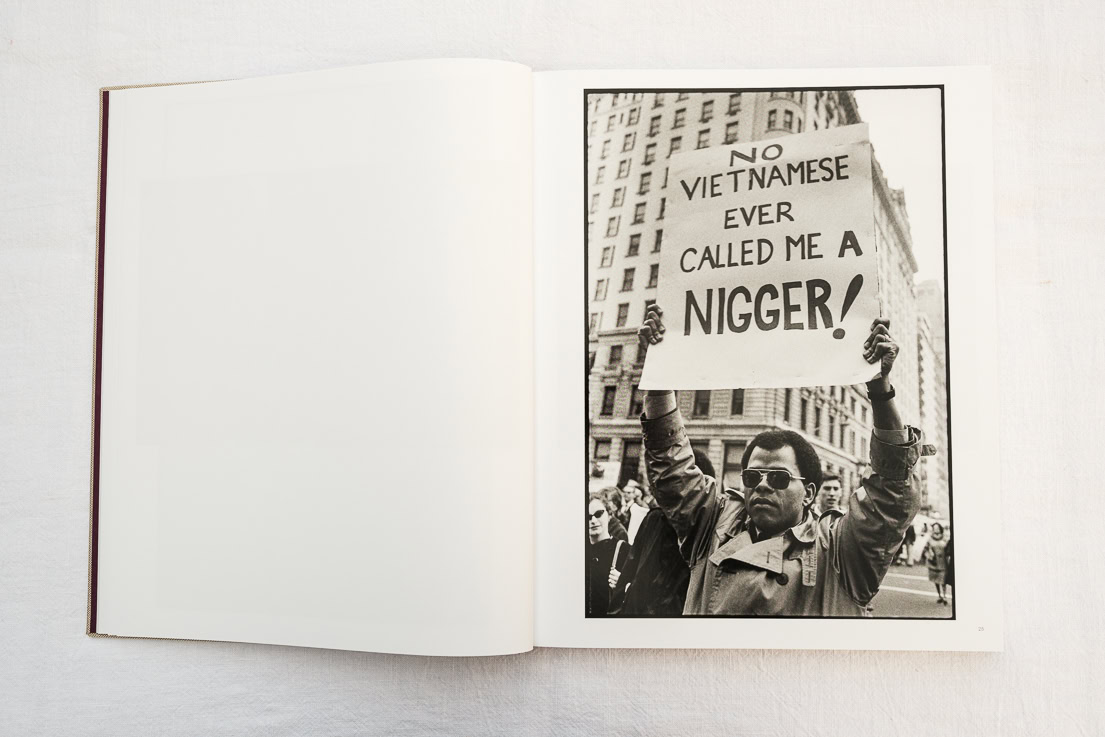
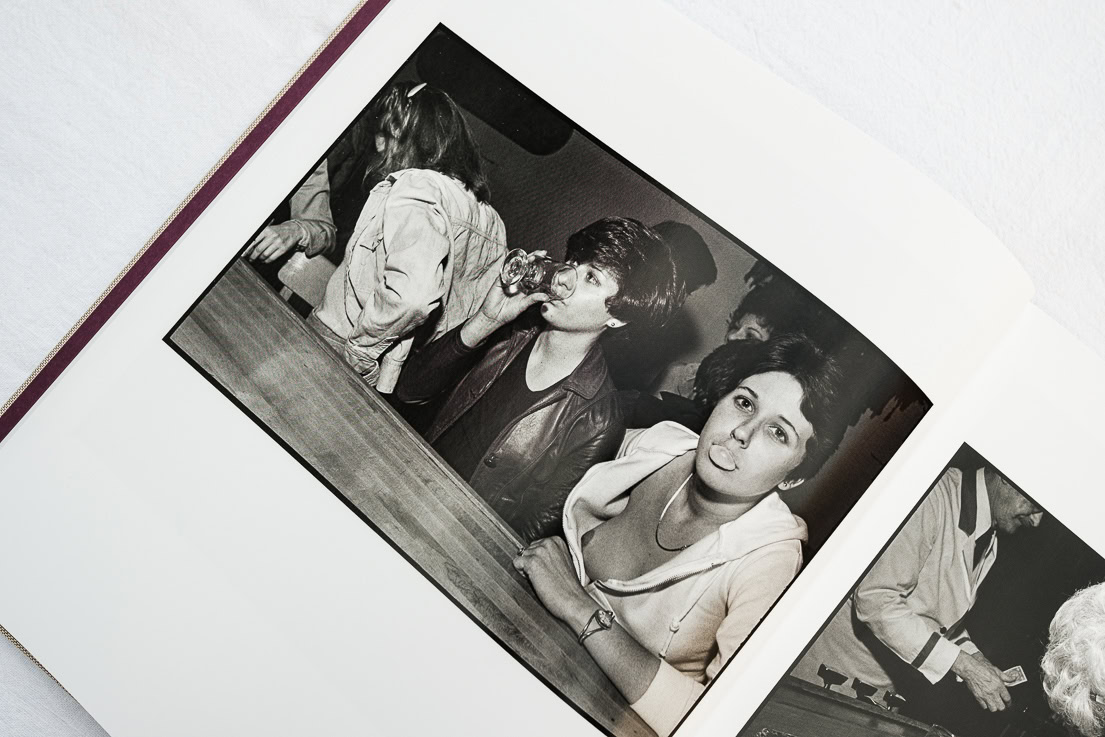

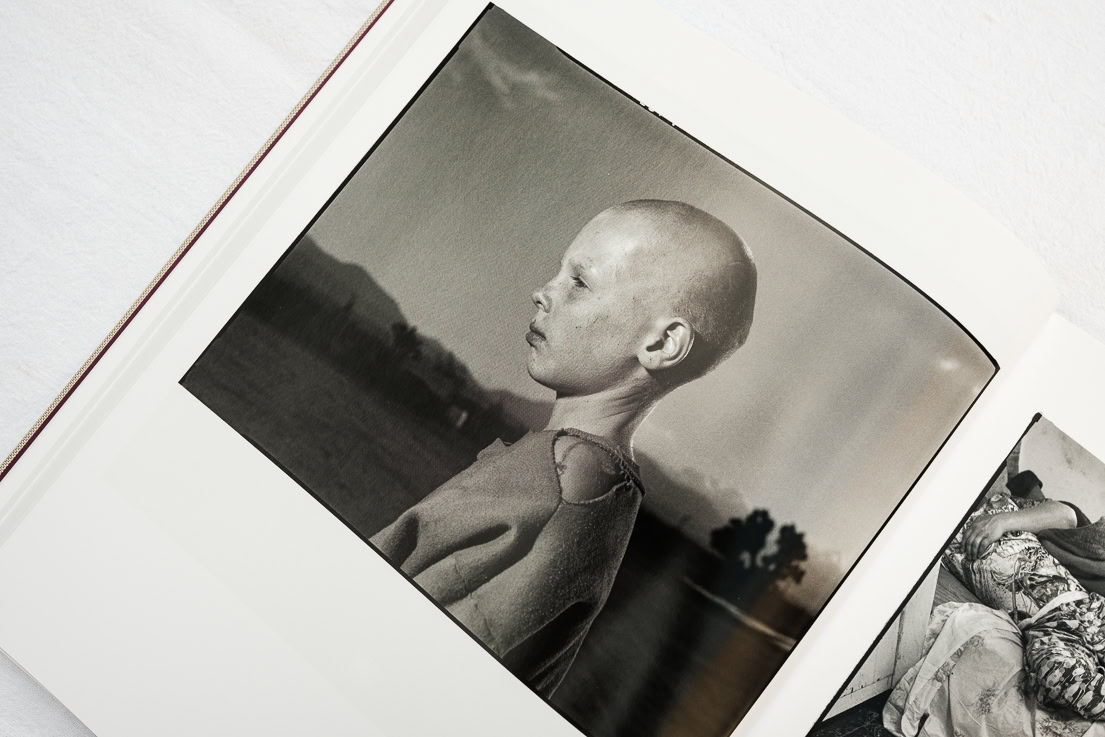
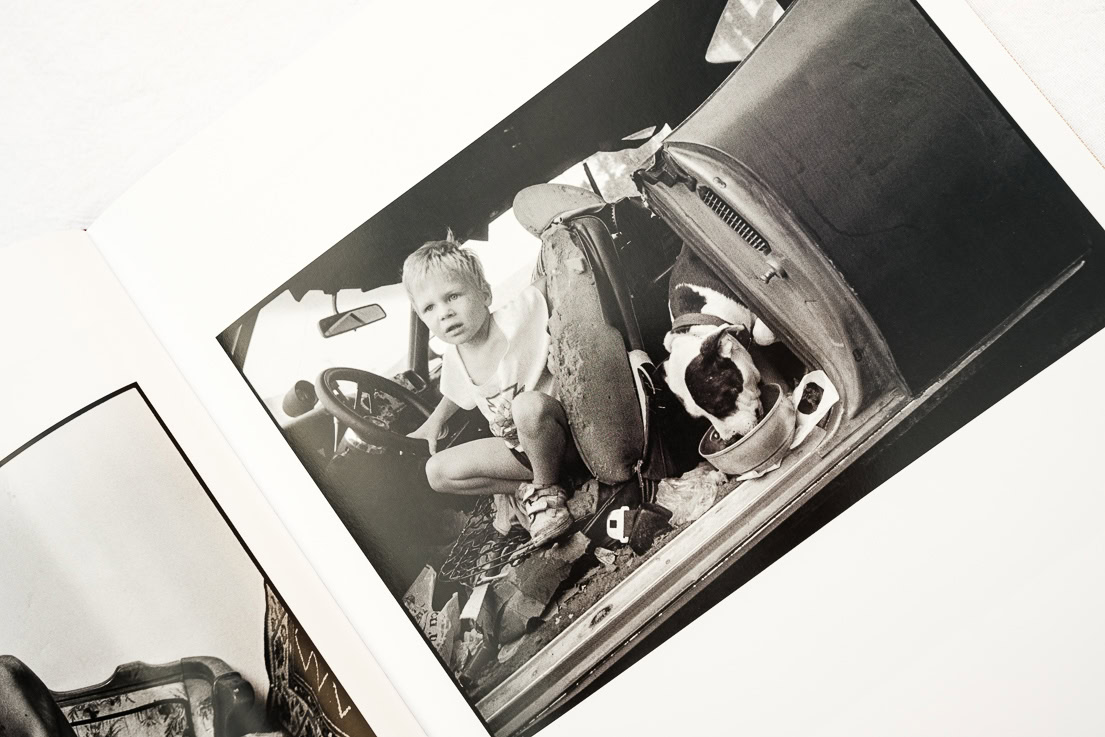
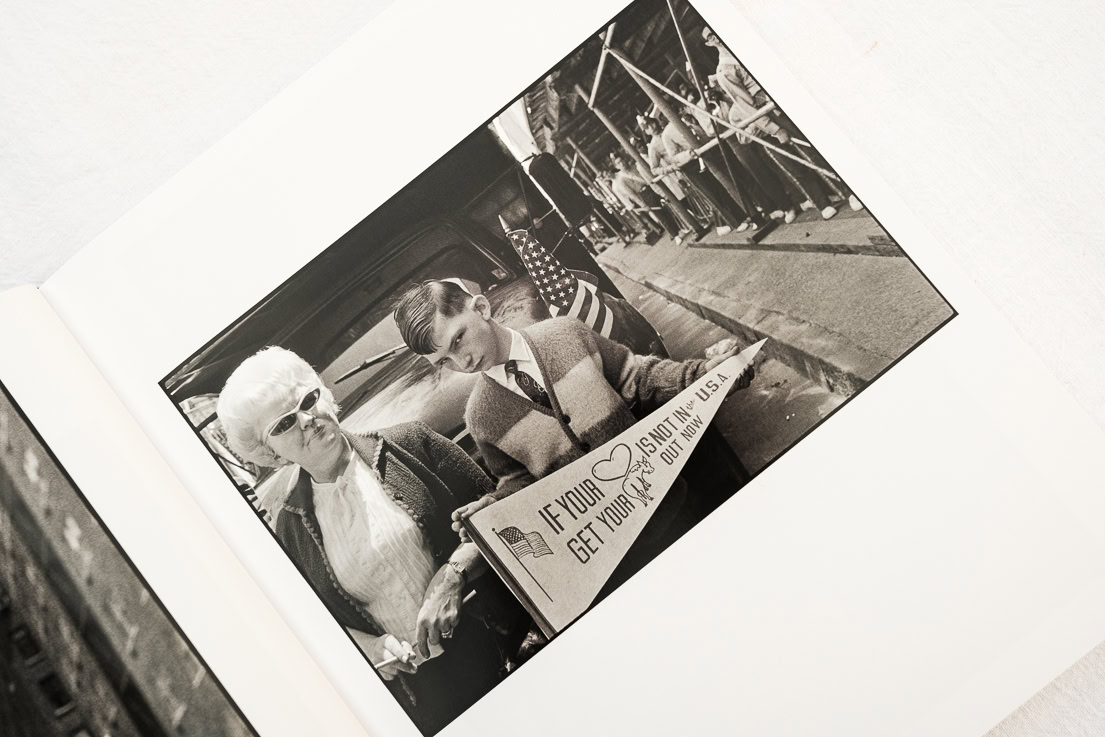
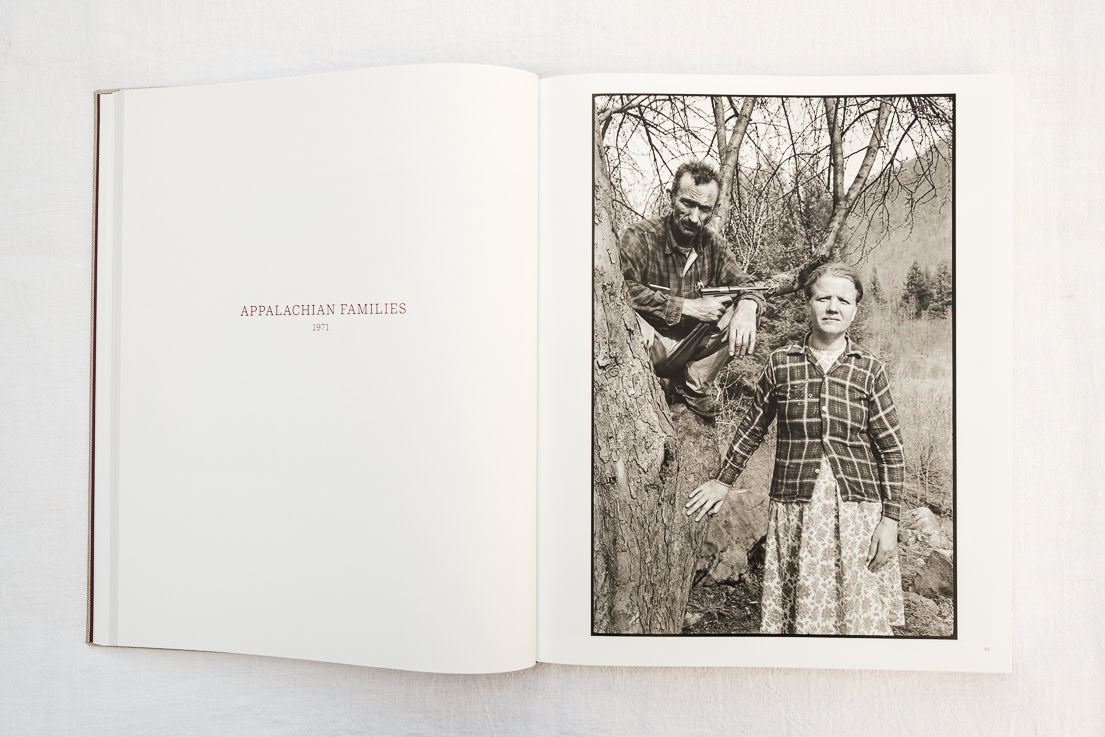
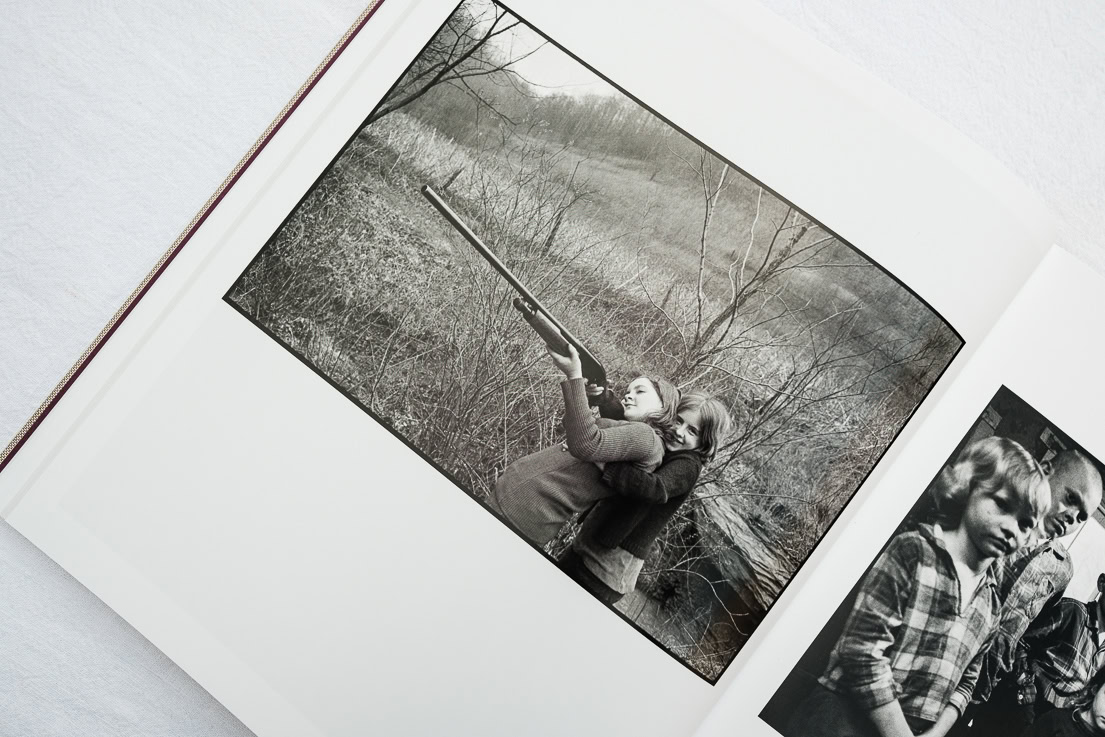

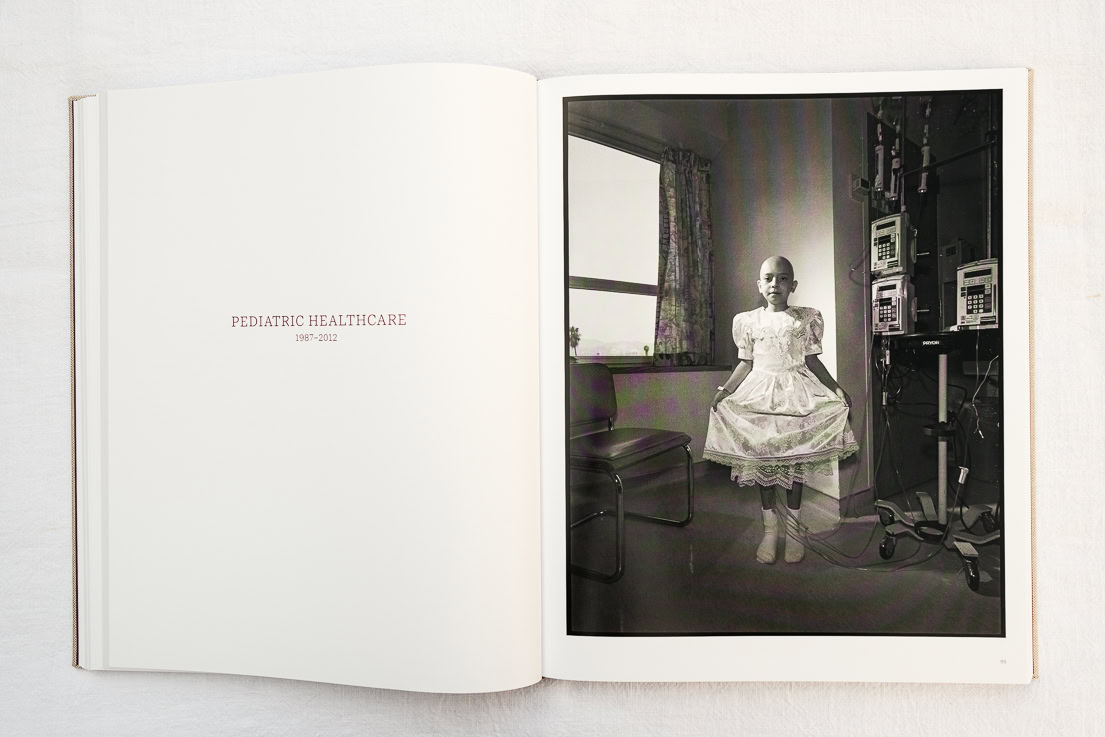
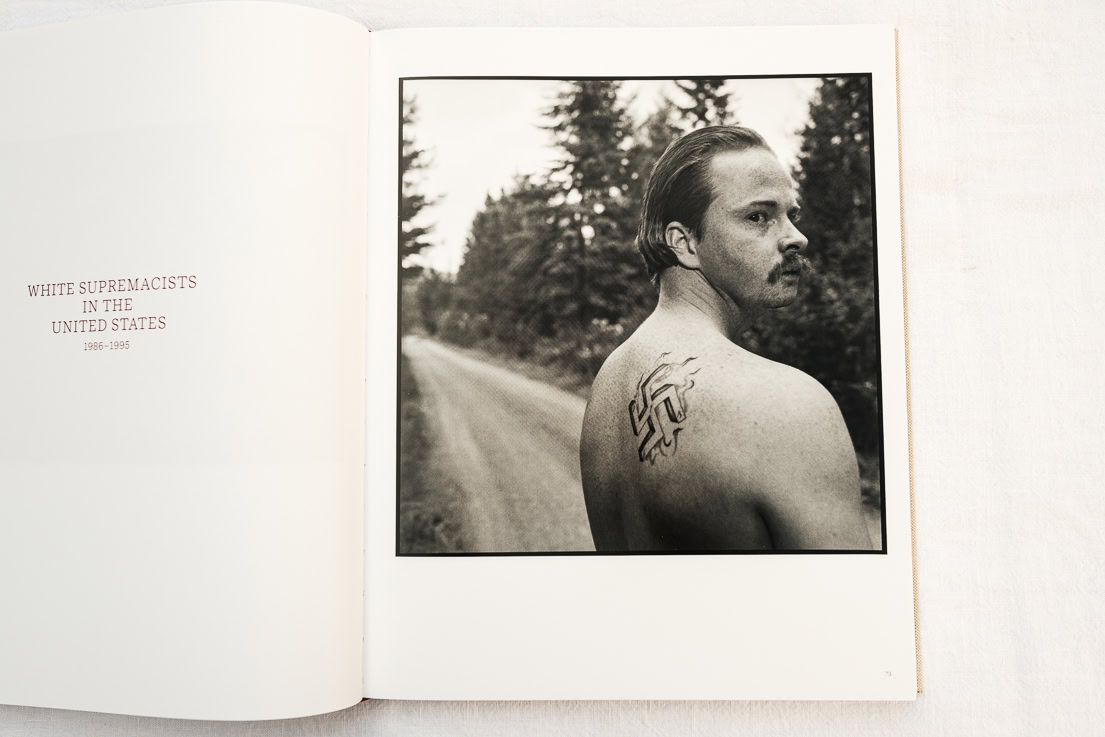
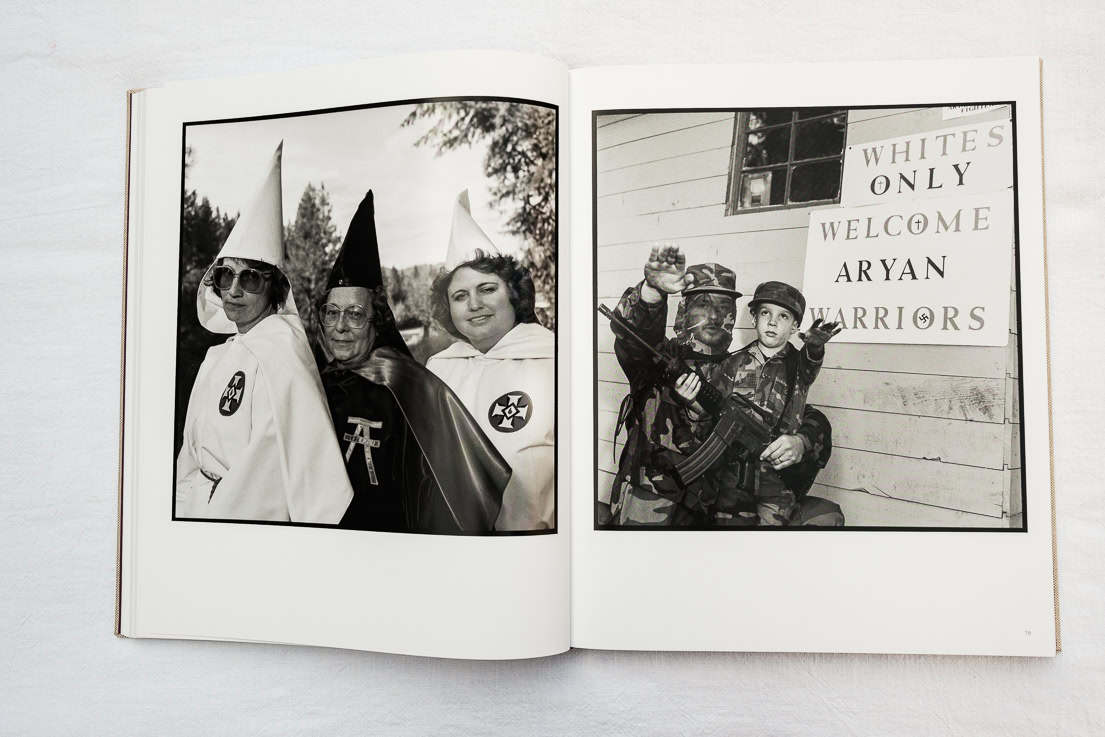
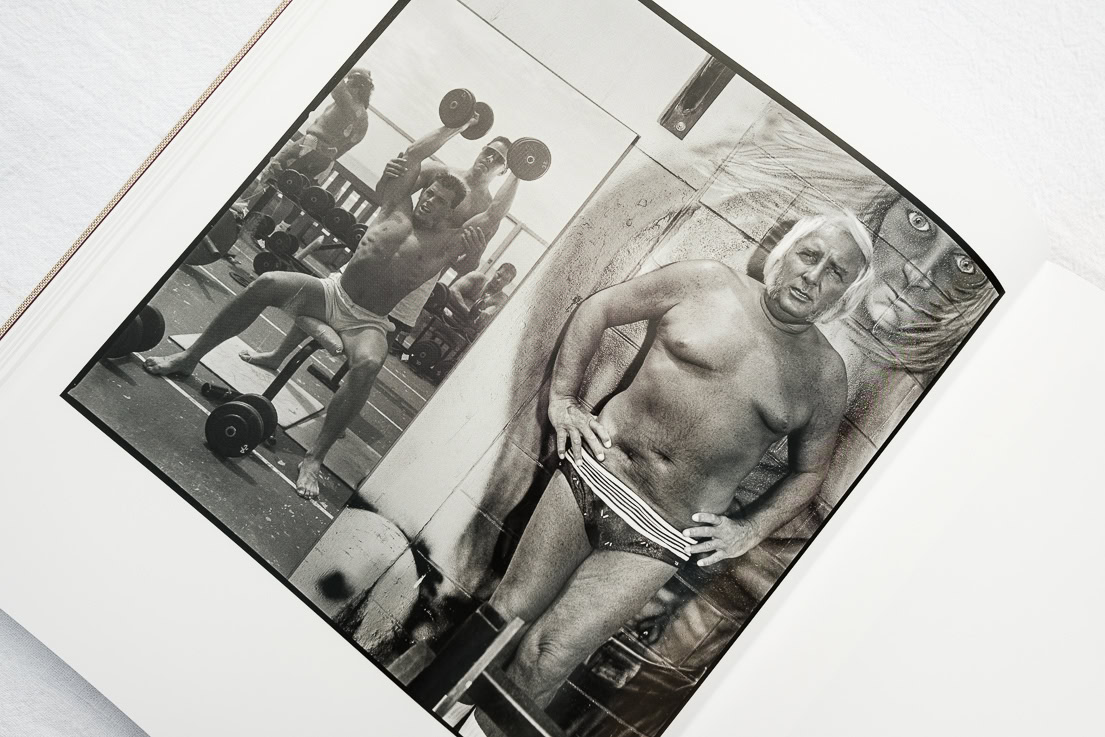
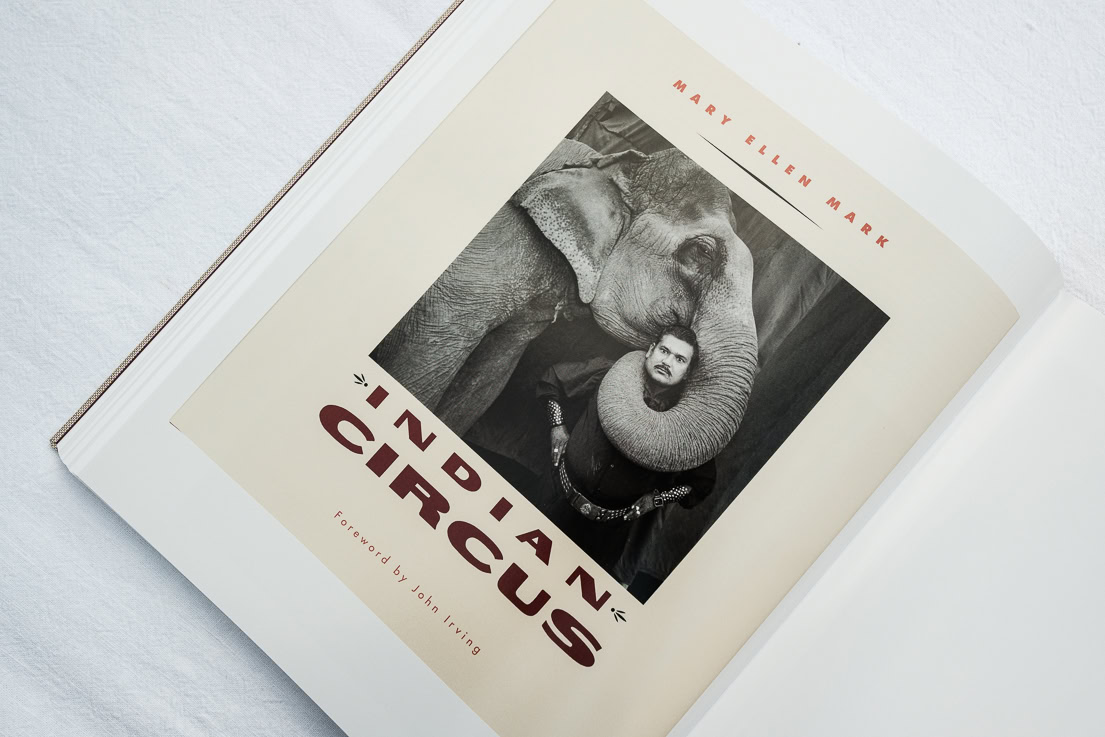
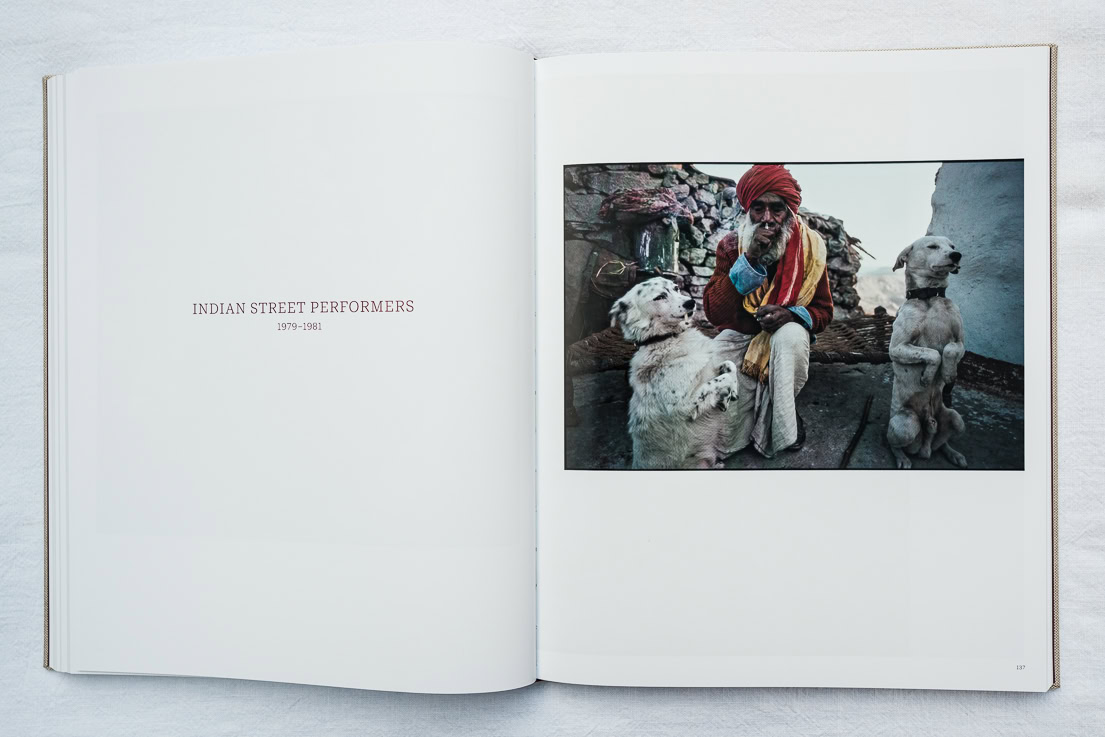


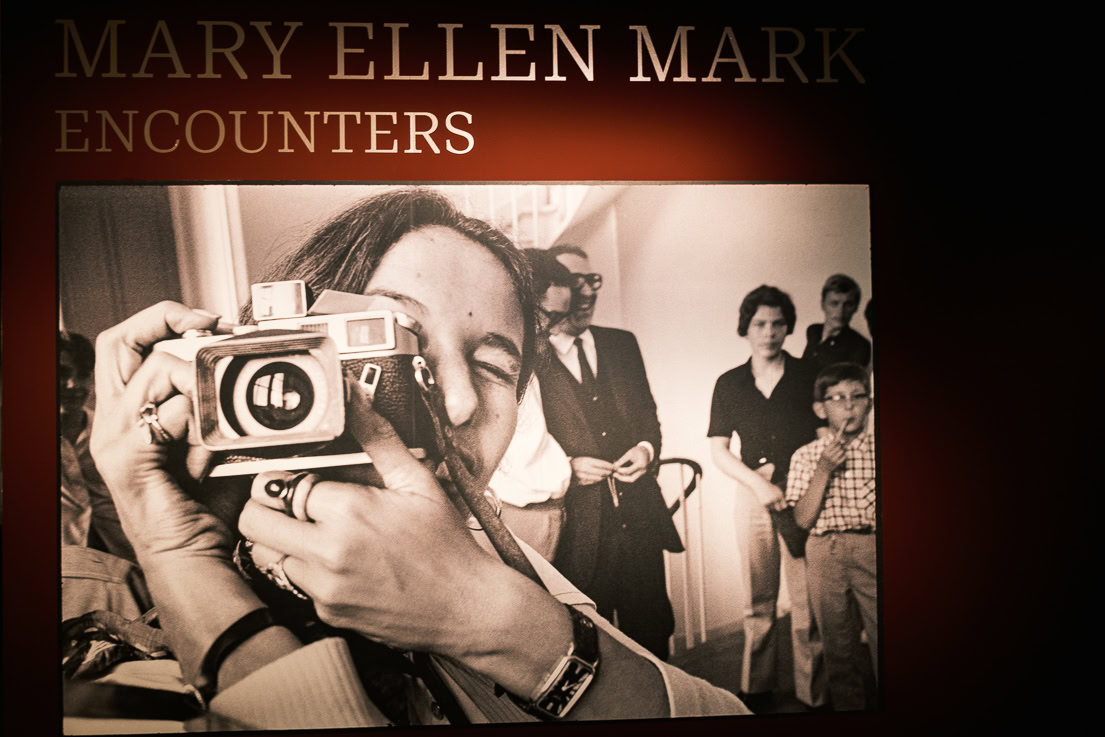
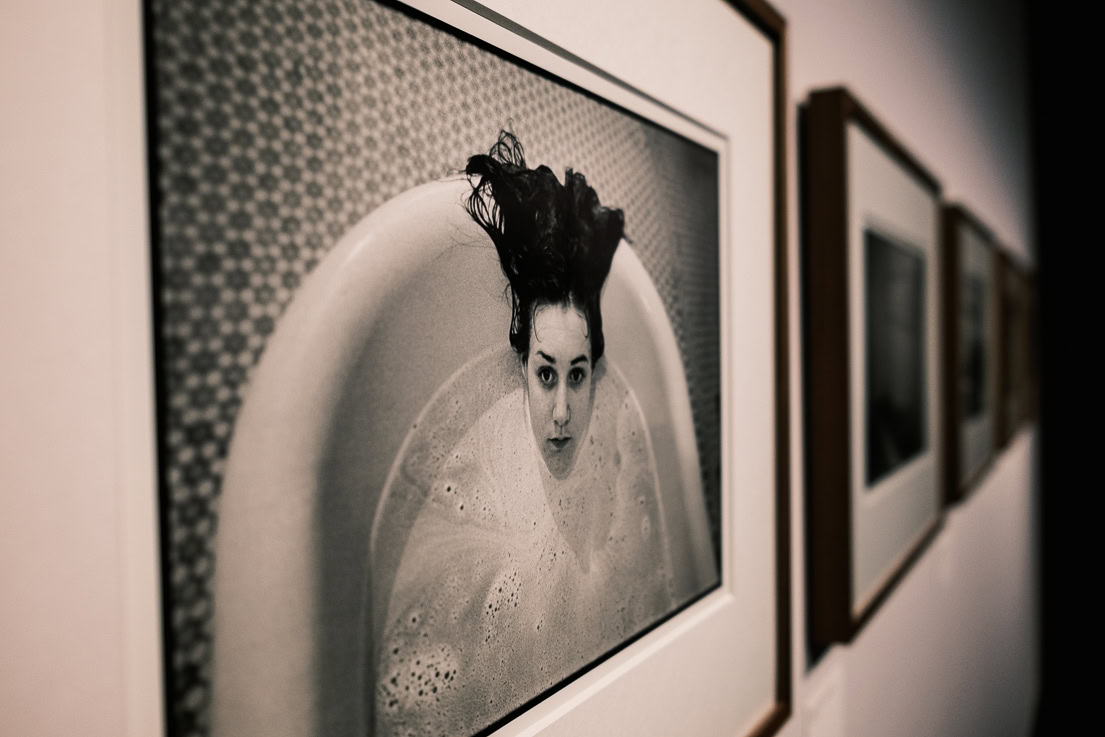
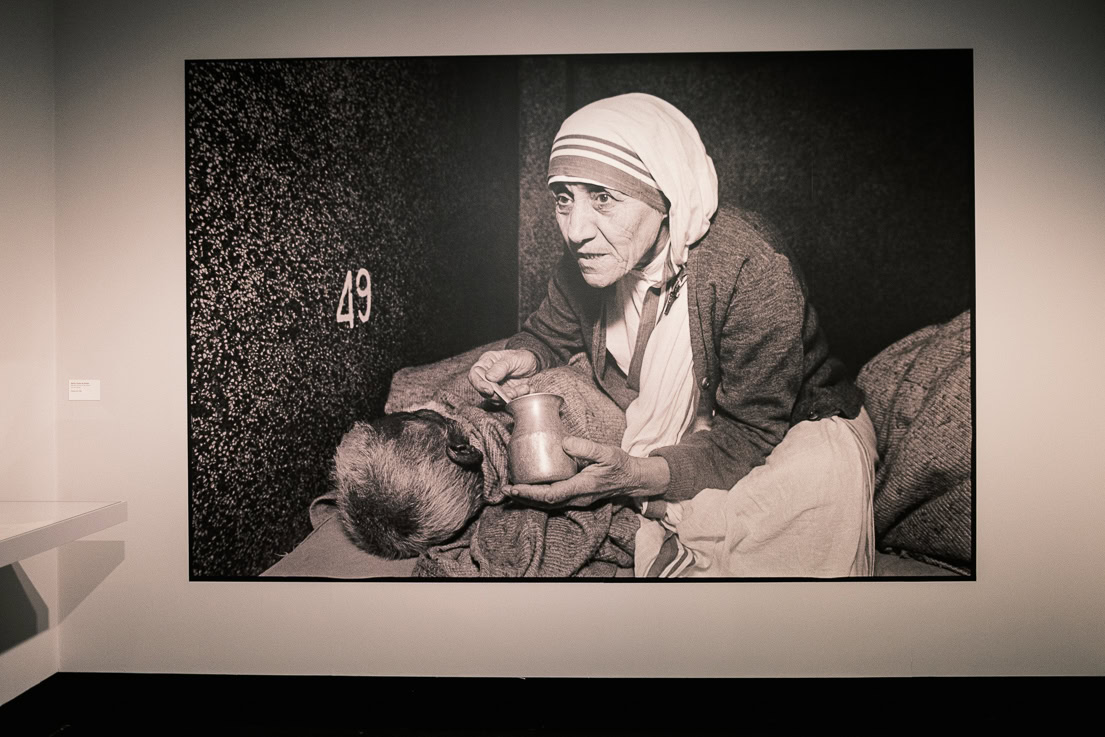
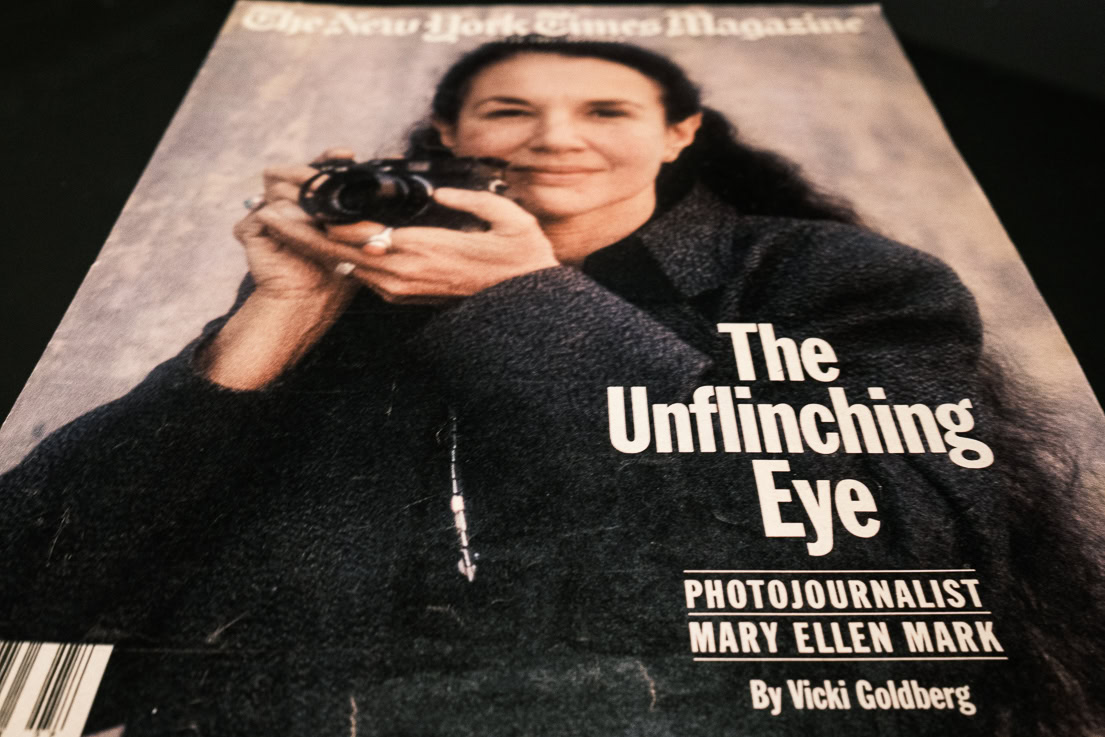
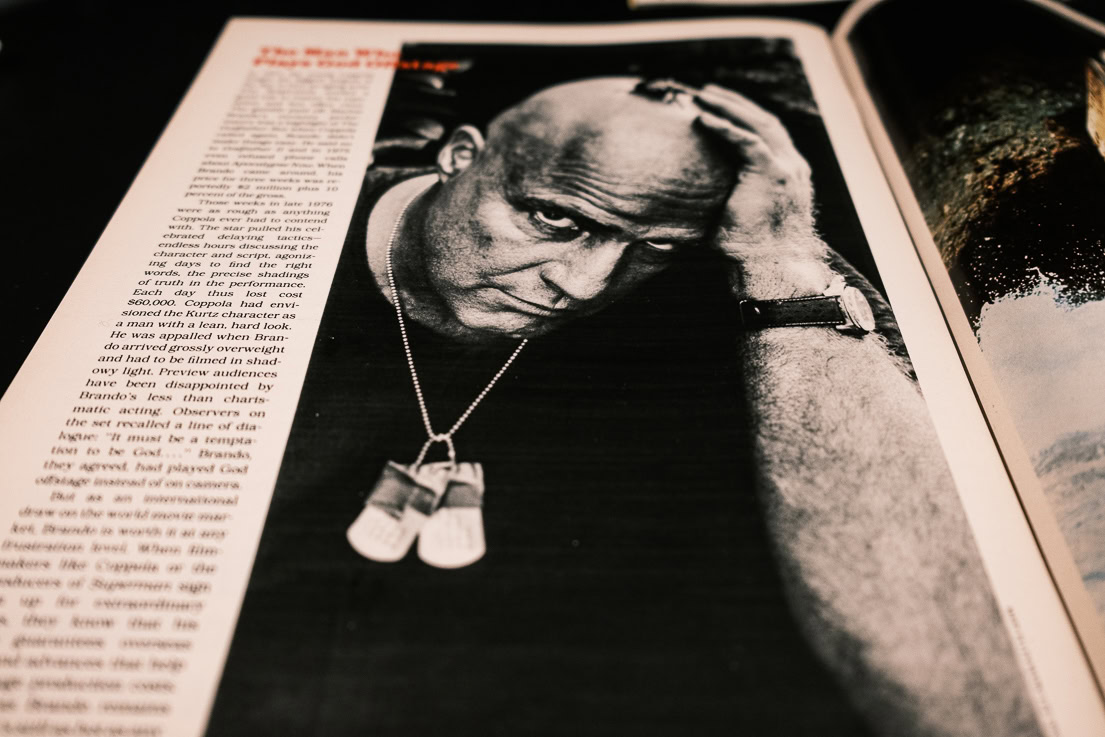

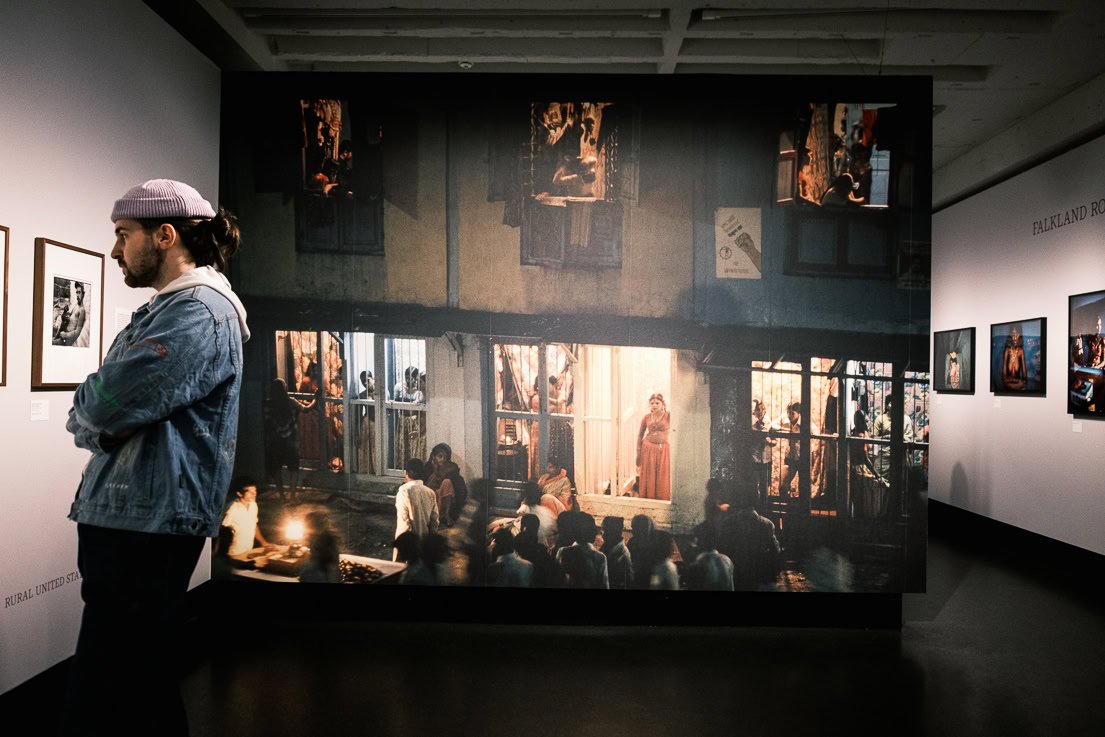
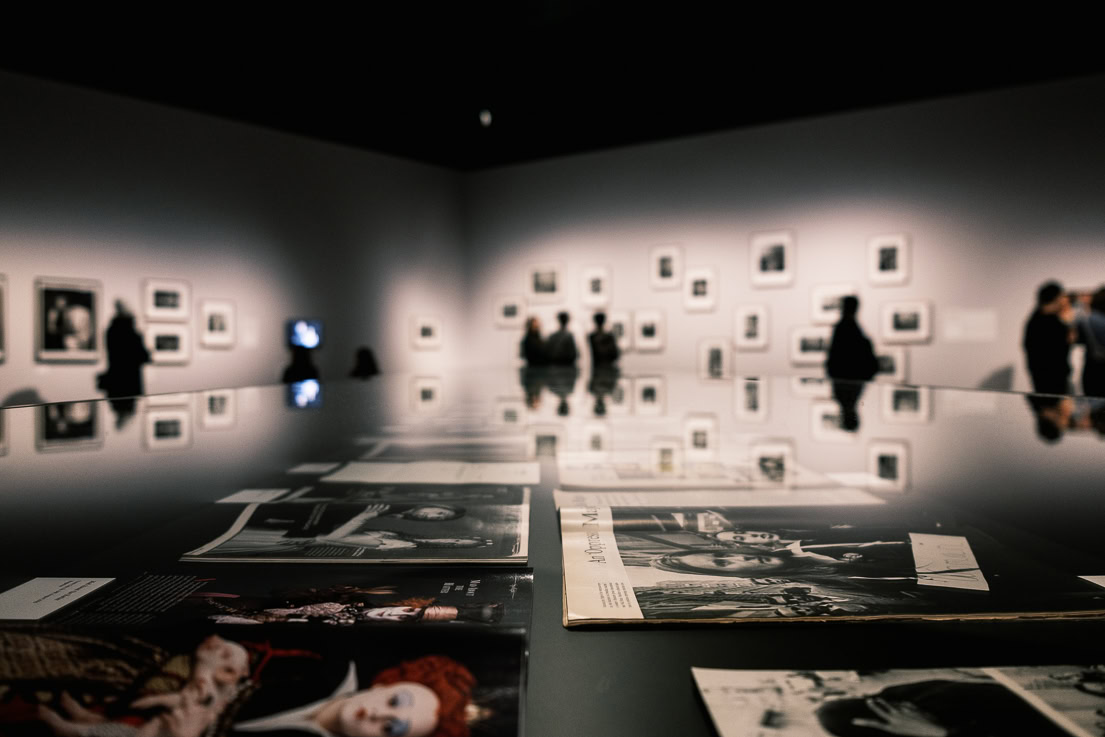
[…] about with which book I would like to continue this slightly different column on photo books. Since my last book presentation, I now have a whole series of drafts for new posts – about both old and new books from my […]
[…] can make it easy for myself on this point and refer to my short text on Mary Ellen Mark in the review on […]